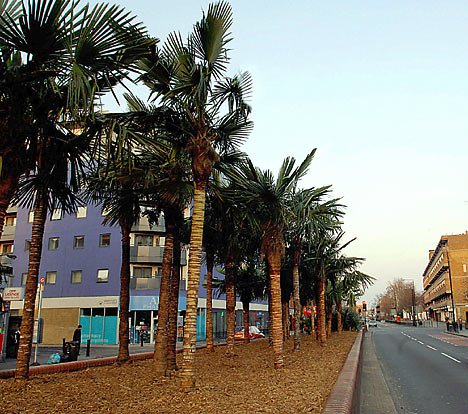The English climate is known for moderate temperatures and large amounts of rain. However, if you look at a map, you will discover that London is actually at the same latitude as Moscow. So, why does England have relatively mild winters and cool summers?
The answer is the Gulf Stream, a powerful, warm Atlantic current that originates off the coast of Florida, runs parallel to the East Coast of the United States and Canada, and then heads across the ocean. The first land that it encounters on the other side is the United Kingdom, which it warms to such an extent that frigid temperatures are a relatively rare occurrence. It can get cold – and it does snow – but compared to somewhere like Moscow, winters in the UK are almost a nonevent.
One of the areas in England that is most affected by the Gulf Stream is Cornwall, a county in the southwest of England that juts out on a peninsula into the sea. Because of the subtropical climate there, especially on the south coast, you can find palm trees and many other types of plants that are more commonly associated with southern Europe and northern Africa. Because of this, Cornwall is a popular tourist destination that is known for its glorious gardens. However, while the flora alone can justify a visit, there are a huge number of other things to see and do. Here are just a few.
First of all, if you are into water sports, then Cornwall is paradise. You’ll be able to hit the big waves on your surfboard at Fistral Beach, located on the north coast of Cornwall just west of the town of Newquay. The beach is home to major international surfing competitions, as well as the headquarters of the British Surfing Association. At the north end of the beach, waves break over a reef when the swell is high, creating waves that can be as high as 40 feet. If you’re into scuba diving, then head down to Falmouth, where you can dive among the numerous wrecks there and marvel at the sea life.
If you are looking for accommodation in Cornwall, then you have an abundance of choices. There are plenty of intimate bed-and-breakfast establishments, as well as hotels with stunning sea views. You can even stay in a 18th century manor house, such as the Clowance Estate, located close to the village of Praze-An-Beeble – to find out more about the estate, follow Royal Holiday on Twitter.
For something completely different, take a visit to Bodmin Moor, situated in the northeastern part of Cornwall. This is wild country, and not what you would associate with the gentle rolling English countryside. There is evidence of human habitation there going back 10,000 years, including numerous Stone Age and Bronze Age settlements, along with prehistoric stone circles and barrows.
This is just a small sample of what you will find in Cornwall. Other things to look at include its ancient tin mines, the island of St. Michael’s Mount, complete with medieval castle, and St. Ives – a breathtaking fishing community that is also home to one of the most vibrant artist colonies anywhere in Europe.

